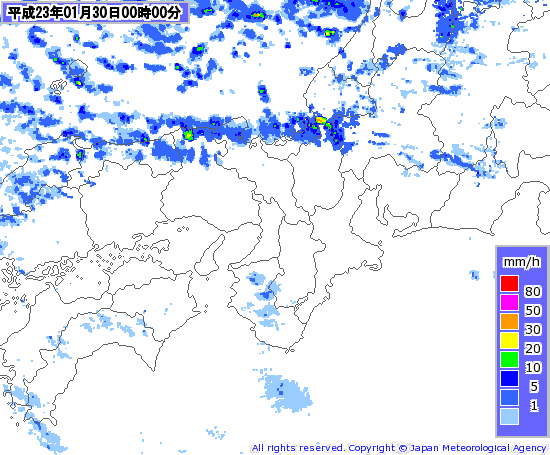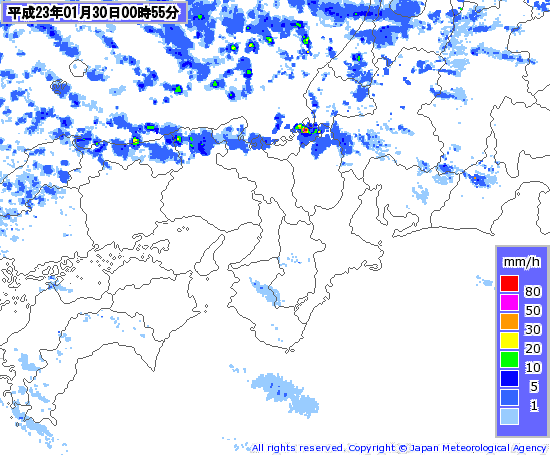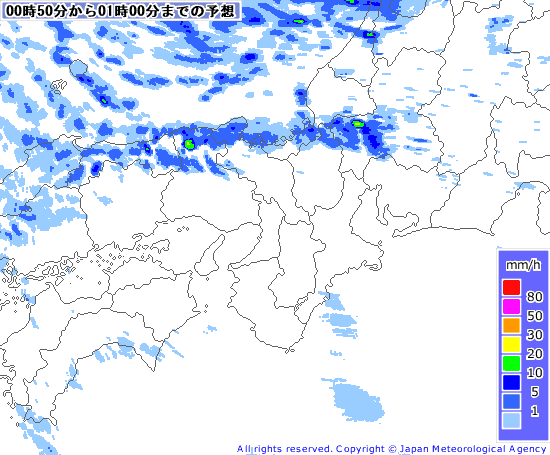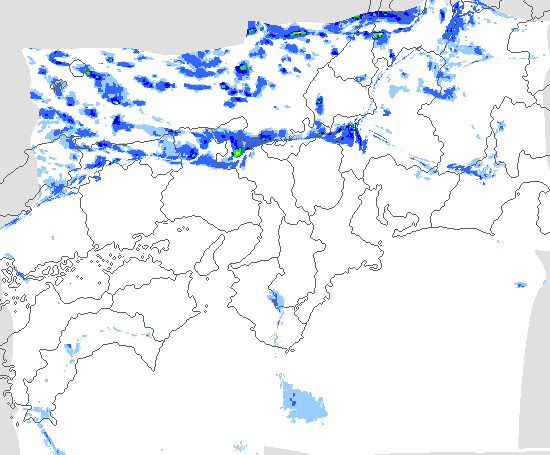Research
Image Processing (2011-)
Automatic Grading System for Programming Contest (2008-)
Related Paper
- Kentaro Imajo, "Contest Environment Using Wireless Networks: A Case Study From Japan," Olympiad in Informatics 5, 26―31, 2011.
Short-term Forecast of Precipitation Using an Optical Flow Algorithm (2011)

Figure 1: Radar map
at 2011-01-30 00:00
at 2011-01-30 00:00

Figure 2: Radar map
at 2011-01-30 00:55
at 2011-01-30 00:55

Figure 3: Forecast of Nowcast
for 2011-01-30 00:55
for 2011-01-30 00:55

Figure 4: Forecast of the proposed method for 2011-01-30 00:55
(Gray area indicates that the area was originally outside at 00:00.)
(Gray area indicates that the area was originally outside at 00:00.)
Incidentally, the previous methods to detect optical flows do not have enough precision to forecast, so I developed and implemented a new algorithm. The algorithm can treat images that are taken with a stereo camera as if they know 3D information using interpolation and extrapolation with the optical flows.

Figure 5: Left-side view

Figure 6: Right-side view

Figure 7: Extrapolation from Figure 6 with three times distance
between Figure 5 and Figure 6
between Figure 5 and Figure 6
Related Paper
- Kentaro Imajo, Go Hasegawa, Yoshiaki Taniguchi, Hirotaka Nakano, "Short-term Precipitation Forecasting Using an Optical Flow Algorithm," IEICE Technical Report 110(455), 93-98, 2011.
Continuous Wavelet Transform (2009-)
Related Paper
- Kentaro Imajo, "Computation for the Fast Continuous Wavelet Transform," JSIAM, 375-376, 2009.